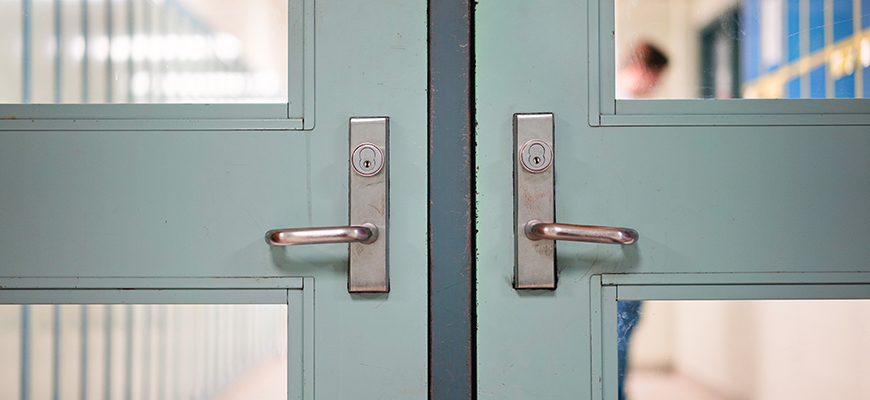Many schools are scheduled to reopen this fall after going fully or partially remote last year due to the COVID-19 virus. But the rapid spread of the Delta variant is causing some concern. As a result, it’s a good idea for schools to reevaluate and enhance their cleaning processes again.
Variants of the coronavirus are to be expected because viruses evolve over time to infect more people faster. While vaccines provide significant protection against the Delta variant, not everyone is eligible for them yet, including children under 12. In addition, immuno-suppressed people may not respond to the vaccine as well as the general population if they are taking certain immune-modulating medications.1
Even with vaccines available, educational institutions must take every step possible to lessen the chances of virus transmission in classrooms and other school spaces. Doing so can help reassure students and faculty that facilities are safe, ensuring they’re able to learn and teach to their highest ability. As they gear up to return to the classroom, we offer cleaning and hygiene tips to help you prepare for this unusual 2021-2022 school year.
Promote effective hygiene and cleaning practices among students, teachers, and staff
Keeping schools safe isn’t just the job of cleaning staff. Everyone can pitch in to do their part to reduce the transmission of the virus.
- Encourage handwashing with hygiene tools. Use signage throughout facilities, especially restrooms, to provide reminders and education about proper handwashing technique and recommended frequency. Make sure restrooms and other hand-washing areas are fully stocked with soap and single-use paper towels instead of dryers, which can spread germs into the air.
- Place dispensers and supplies in accessible and visible areas. Provide hand sanitizers at all entrances and exits as well as other high-traffic areas in classrooms, libraries, labs, offices, cafeterias and kitchens, teachers’ lounges, and athletic facilities. Provide ample dispensers for soap, towels, and tissues near sinks, adjusting for height where appropriate. Encourage everyone to clean workspaces such as desks, tables, keyboards, and other surfaces after use by keeping disinfecting wipes in easy-to-reach areas. Using touch-free dispensers for sanitizer, soap, and other supplies where possible can help further reduce the potential for contamination, as can using one-at-a-time dispensers for napkins and tissues.
- Follow a cleaning checklist. Providing a detailed list of steps and recommended supplies can help make sure staff clean each area completely and effectively every single time. For example:
- In reception and entry areas, wipe down all high-touch surfaces, including touch screens and keyboards used for visitor registration.
- In office areas, clean shared equipment such as printers and telephones.
- Clean arm-rests on chairs in teachers’ lounges and meeting rooms.
- In restrooms, begin with the cleanest areas and finish with the toilet, and spell out how often to launder and replace tools like mops and sponges, which can help avoid potentially dangerous buildups of microorganisms. Using several individual wipes can also help prevent the spread of germs.
- In cafeterias, breakrooms, and kitchenettes, make sure to wash greasy or oily surfaces with hot water and detergent before using disinfectants. As with restrooms, start with the cleanest areas and end with the dirtiest.
Keep surfaces clean and safe
Many people in concentrated areas such as classrooms, gyms, and cafeterias increase the likelihood of picking up and spreading bacteria and viruses from contaminated surfaces. Consistently cleaning and disinfecting high-traffic areas in your school facility can prevent the growth and transmission of pathogens.
- Classrooms and lecture halls: Wipe down desks, chairs, and teaching aids such as computer devices and remotes frequently. Don’t forget about handrails and water fountains.
- Restrooms: Sinks, faucets, and sink handles should all be carefully cleaned and disinfected, as well as toilet seats, flush handles, and individual stall doors and handles.
- Cafeterias, kitchens, and faculty lounges: Areas where people prepare food and eat require additional scrutiny and cleaning. Utensils, dishes, countertops, and trays should be sanitized. In addition to tables and chairs, wipe down and disinfect sneeze guards, dispensers, refrigerator handles, and registers.
- Gymnasiums and arenas: Gyms have many surfaces where germs can be deposited, making it essential to frequently clean exercise equipment such as weights, balls, machines, and mats. Making cleaning supplies available and encouraging visitors to clean items before and after use can help. Lockers should be wiped down inside and out, especially handles and locks. At arenas, clean benches and seats as well as high-touch objects like security turnstiles, ticket dispensers, and touchscreens.

Remember that in all areas, high-touch surfaces like light switches, and door and window handles should also be a particular focus for frequent cleaning.
Tools and resources to help you reopen schools safely
Going back to school is a big step for everyone moving forward. Implementing and consistently following thorough cleaning and hygiene policies and practices is critical to maintaining the health and well-being of students, faculty, and staff this fall and beyond. These tips and resources can help your school develop a framework that can help ensure everyone’s safety as you go back to school.
For more free tools that can help you make sure you have effective cleaning strategies in place at your school ahead of the fall, visit Tork Clean Care for Education.
Sources
1 The Regents of the University of Colorado: Delta Variant Overtakes COVID-19 Cases in Colorado: Should You Worry?
